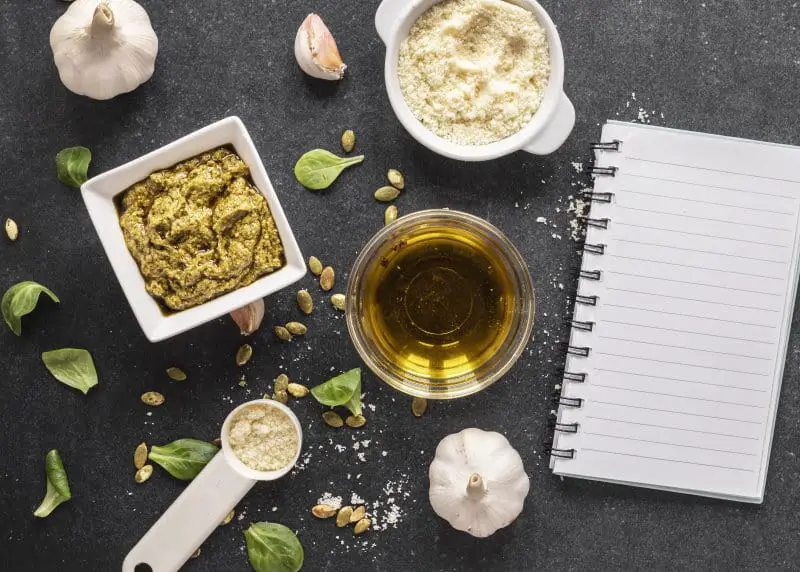In October 2020, Olympic ice dancer, Jean-Luc Baker, took to Instagram with a quandary: “Out of beard oil,” he said, “was thinking about using olive oil?”
Baker was surely not the only quarantined beardsman looking into whether the salad and sandwich mainstay would work for his facial hair. So, what’s the verdict? Is olive oil good for your beard?
Not only is olive oil fine for your beard, it’s also a common carrier ingredient in beard oil! In a pinch, you can use it to refresh your tired beard and moisturize the dry skin underneath. Olive oil can also be combined with other items to make a fine homemade beard product.
Now, let’s dig a little deeper into what makes olive oil so useful for facial hair. Along the way, you should pick up some good tips for the cooking staple.
There’s Olive Oil in My Beard Products?!
Beard oil is primarily composed of a soothing, moisturizing base called a carrier oil. Carrier oils vary in quality and cost. These bases are normally derived from nuts and protein-rich fruits and vegetables. They serve two purposes: hydrating your beard and face, and diluting more abrasive scented oils.
One such carrier oil is, believe it or not, olive oil. It contains the same vitamins and fatty acids as other common carriers like jojoba oil, coconut oil, and castor oil. As such, you can think of olive oil as beard oil without all the bells and whistles.
What Kind of Olive Oil Works Best in Beards?
Remember the first time someone told you to pick up olive oil at the supermarket? Unless you were a chef-in-training, you likely stood in an aisle full of tinted glass bottles. You saw virgin olive oil, extra-virgin, organic, pure, refined. You just wanted olive oil!
This begs the question: with so many different types of the stuff, which bottle should you choose for your beard?
You don’t have to go super-fancy when deciding. A quality, mid-price, extra-virgin olive oil will do the trick. Less viscous than pure olive oil (which is sometimes used for body massage), it is also far less acidic.
Still, the cold-press method of extraction retains all those rich fats and vitamins that you’re looking for. Consequently, extra-virgin olive oil will impart all the beneficial stuff without leaving your skin dried out or your beard hair gummy.
What Olive Oil Will Do and Won’t Do

There are a lot of wild claims about how various oils and unguents affect hair. So, let’s take a moment for a reality check on what olive oil will and won’t do for your beard.
Most importantly, it will not make your beard grow longer or faster. Neither, for that matter, will beard oil. There’s nothing in carrier oil that promotes increased follicle growth.
However, olive oil will strengthen your beard. All that Vitamin E and all those fatty acids are great for hair. They repair damaged hair, and they’re nourishing.
Also, importantly, olive oil will moisturize your face. This reduces dandruff and helps new hair emerge healthy and full. Because extra-virgin olive oil is less viscous, it’s less likely to clog pores. This reduces acne and other blemishes that can impede hair growth.
From an aesthetic perspective, olive oil will make your facial hair seem fuller and give it a healthy shine. Plus, an oiled beard is a softer beard.
Extra-virgin olive oil is heavy enough to help in shaping and styling your beard. However, if you have an especially uncooperative mane, you’ll probably want to finish the job with some styling product.
How to Apply Olive Oil to Your Beard
When applying olive oil to your beard, you should use the same technique you use for beard oil. After all, it has much of the same composition and consistency.
As with beard oil, you will only want to apply olive oil when your beard is clean. This means you should have a shower or rinse over a sink beforehand. However, you also need to towel-dry your facial hair or the oil won’t adhere. Here are some quick and dirty tips for effectively applying oil to your face.
- Drip the oil onto your fingers, not directly onto your beard.
- Massage the oil all the way through your beard, working it into your face as well.
- A few drops are sufficient. You want your mane to look full and healthy, not greasy.
- If you haven’t already, invest in a good beard brush or comb. These are great for working oil into your facial hair.
For some more in-depth discussion of beard oil application, check out our recent article on the topic.
Won’t I Smell Like a Salad?

Don’t worry about the smell. One of olive oil’s main selling points in cooking is its subtle, mutable taste. It has a slightly musty, faintly sweet aroma that is barely noticeable by itself and amplifies the pleasant scents of your other beard products.
Therefore, don’t let the odor question dissuade you from using olive oil. Your face will not smell like a Caprese salad, we promise.
Spiking That Oil
Now, things get fun. Knowing that olive oil is a common base for many beard products, nothing is stopping you from concocting your own at-home beard oil!
Using extra-virgin olive oil as a base, you can use an eyedropper to spike it with agents that promote healthy, attractive hair and pleasant aromas. These additives can include:
- Complementary carrier oils like argan, jojoba, and coconut.
- Tea tree oil for its soothing properties.
- Essential oils for aroma and additional nutrients.
- Vitamin E supplements.
- Whole herbs and spices like rosemary and cinnamon.
Here are a couple of notes of caution, however. Firstly, it’s best to infuse the oil with easily removed items like cinnamon sticks and rosemary sprigs. You don’t want to have flecks of ground spice hanging out in your beard.
Secondly, some essential oils can be seriously caustic. Pay close attention to manufacturers’ warnings, and use the oils sparingly.
Home Beard Oil Recipes

It’s also probably a good idea to start with some tried-and-tested at-home beard oil recipes before you start playing jazz with the formula.
Two olive oil-based recipes we love are:
- Greek olive oil producer Oliviada recommends you mix their product with other carrier oils – Almond, Coconut, and Castrol – then spike the mixture with Rosemary and Lavender. You can choose between herbal or floral.
- Washington-based organic farm, The Elliott Estate, has a great, more advanced recipe involving essential oils made from Wild Orange, Melaleuca, Sandalwood, and Cassia. It’s zesty and musky all at once!
The Bottom Line
Hopefully, this puts your mind at ease about using olive oil in your facial hair. Not only is it a useful, effective tool for a fuller, healthier, softer beard, it can also be a starting point for an exciting DIY beard oil.
Also, olive oil is not the only fun alternative for your face-pelt. Take a look at our discussion of baby oil as a beard-grooming option.

